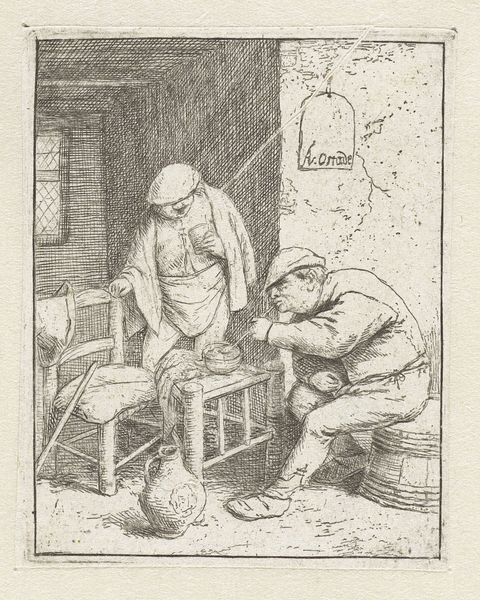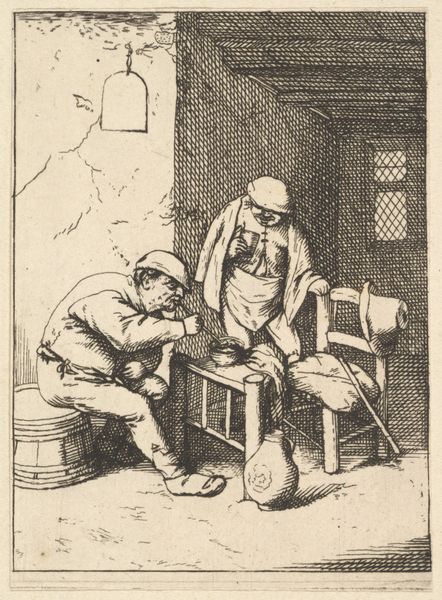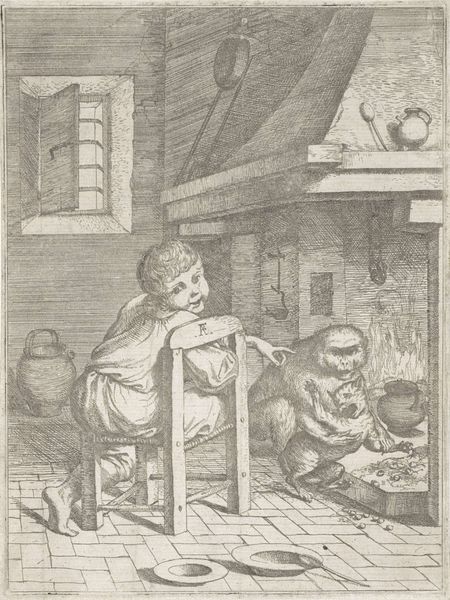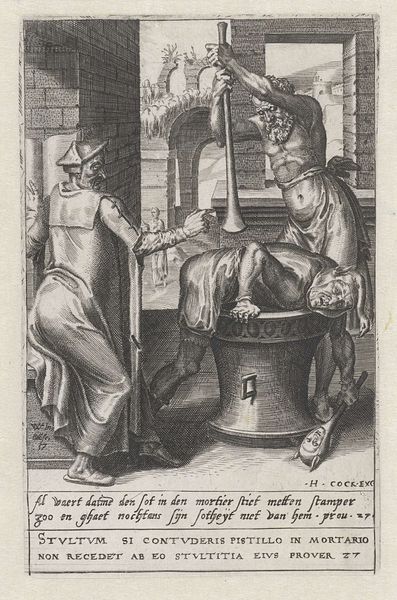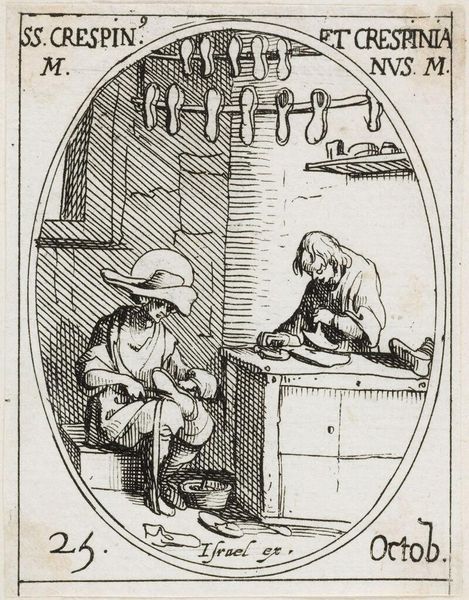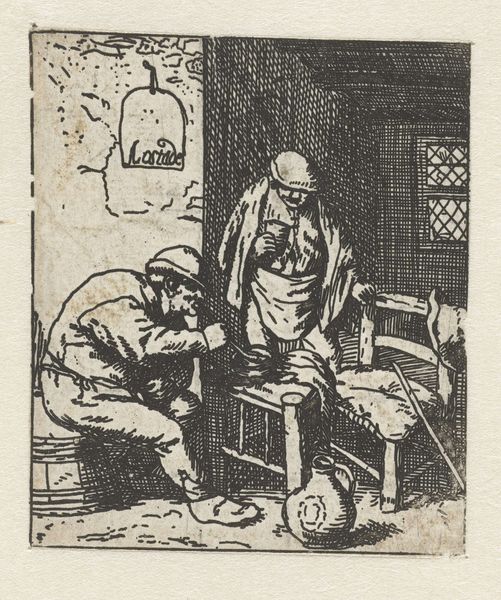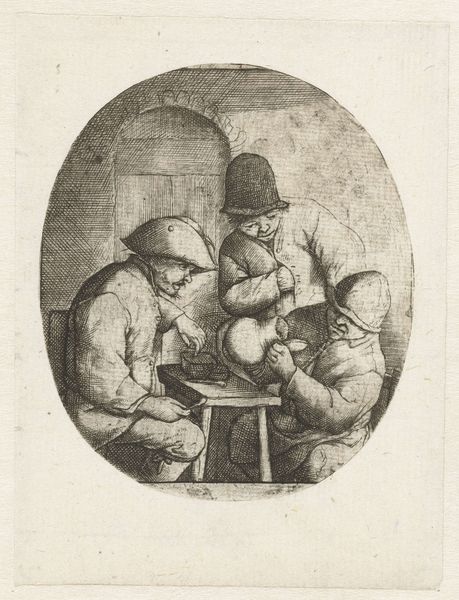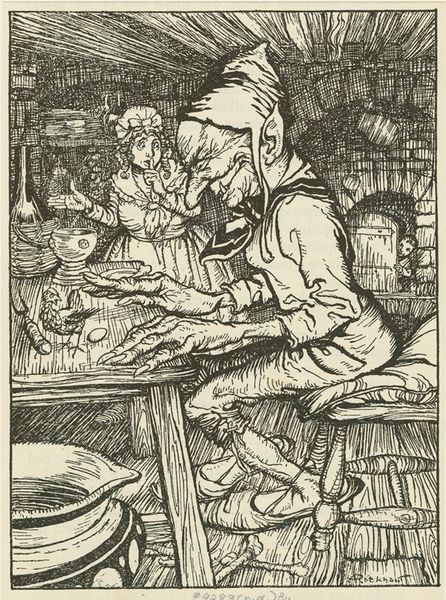
print, etching
#
portrait
#
dutch-golden-age
# print
#
etching
#
figuration
#
genre-painting
Dimensions: height 79 mm, width 63 mm, height 354 mm, width 262 mm
Copyright: Rijks Museum: Open Domain
Curator: Let's take a look at "Man Lighting a Pipe in an Interior," an etching attributed to Adriaen van Ostade, possibly created between 1671 and 1900. Editor: It’s stark. The lines are so detailed and concentrated that the entire composition seems to exist in this closed-off, almost claustrophobic space. I immediately consider the social realities inherent to interiority as theme and as matter. Curator: Absolutely. And look how the interior operates on multiple levels. The space they occupy is quite literally crafted. Think about the labor involved in the simple domestic elements: The creation of the pipe, the fabrication of those wooden planks, the jug… These materials are of their time, as much of their time as any symbol. Editor: Agreed. And beyond those objects we could delve into how smoking was racialized and gendered throughout the 17th Century. Tobacco played a large role in early colonial trade networks that trafficked enslaved peoples, thus enabling Europe’s ascent to the dominant economic power. Ostade’s print shows how a global industry manifests on the domestic scale of a man’s interior. Curator: Precisely, but also what do these men actually *do* within that constructed interior? One prepares the tobacco and the other prepares to smoke it. Consider that throughout much of Western art history depictions of "lower-class" individuals involved themselves in consumption, intoxication and recreation... a sharp contrast with how paintings depict the nobility at work. The image can then reinforce societal stereotypes as part of Dutch visual culture of its time. Editor: Fair. I still fixate on the materiality—on etching, on printing. Here, the tools and technologies that facilitate making the work available also render these two figures available for popular judgement, circulating and solidifying the existing views and stereotypes. Curator: It is also very easy to be too pessimistic. One cannot ignore the very humanity imbued in such an everyday domestic activity. Even if the depiction runs afoul of today's cultural values, there is a great deal of truth and sensitivity about it that resonates centuries later. Editor: Point taken. Overall, considering how Ostade portrays the intersection of domestic space, the labor involved in its construction and enjoyment, we come to see that an interior is far more than just “four walls.”
Comments
No comments
Be the first to comment and join the conversation on the ultimate creative platform.
